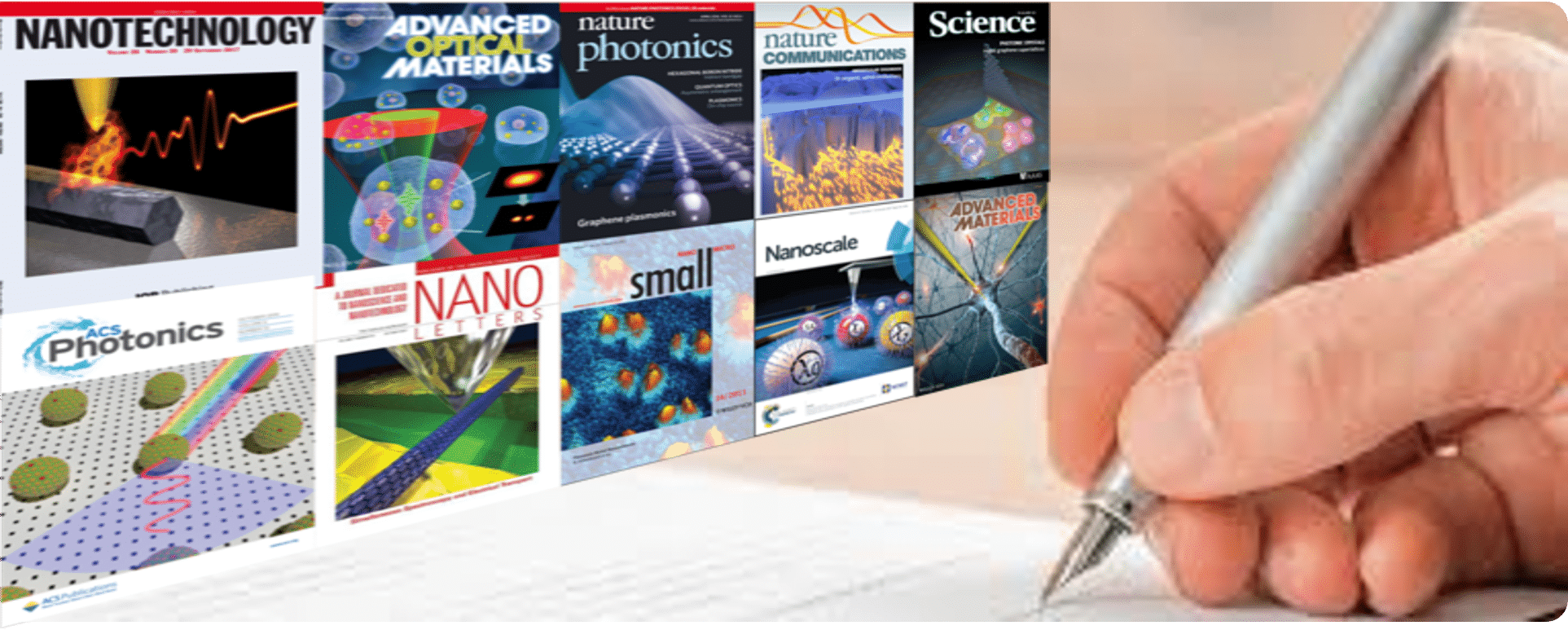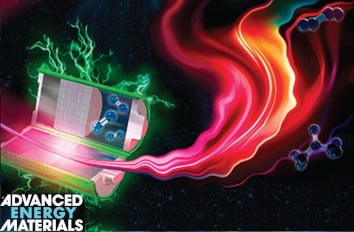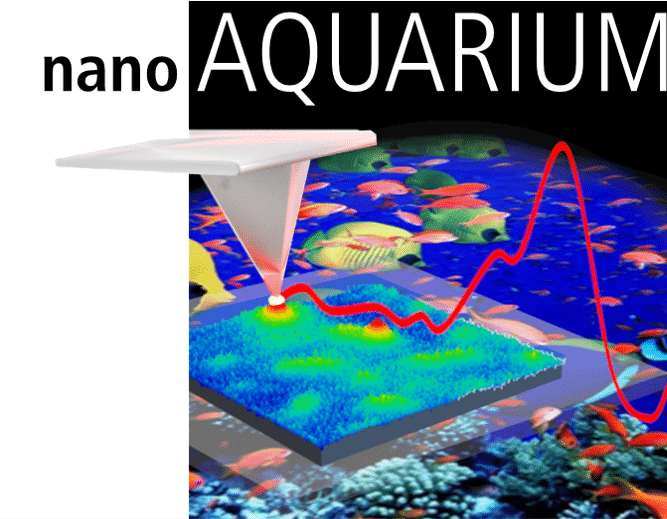neaspec Journal Club
Stay up-to-date with the latest in neaspec publications
Our Journal Club is meant to be a helpful tool that keeps you up-to-date on the newest in nanoscale analytics research and to assist you in discovering articles you may have missed.
Subscribe to receive monthly reviews of all neaspec new articles:
Novel Energy nano-Materials
Nepel et al., Advanced Energy Materials; Zhu et al., Nature Materials; Komissarova et al., Sustainable Energy and Fuels.
Nanoscale energy materials come with increased surface-to-volume ratio leading to extraordinary properties applicable to heat transfer, energy conversion, and storage. Performance optimization of those properties require nanoscale chemical analysis of such small and heterogeneous materials
nano-Polymers
Kim et al., Spectrochemica Acta Part As; Stanciu et al., ACS Omega; Xu et al., Journal of Colloid and Interface Science.
Polymers are part of most of the products around us generating alarming environmental impact. To increase sustainability and functionality, polymer scientists are looking for new, smart solutions at the nanoscale e.g. nanofibers, nanocomposites, core–shell particles or nanotubes. Such nano-polymers have a great potential for a broad range of applications.
nano-Catalysis
Say et al., Journal of the American Chemical Society; Sterl et al., Nanoletters; Ni et al., ACS Photonics.
80% of all products involves catalysis at some point in the manufacturing process. Catalysis is immensely important not only because it is an aid to economic success for the major world economies, but also because it enables materials to be made that sustain society as we know it.
Luttinger-liquid Plasmons
Gergely Németh, Keigo Otsuka, Dániel Datz, Áron Pekker, Shigeo Maruyama, Ferenc Borondics, and Katalin Kamarás, Nanoletters
Carbon nanotubes (CNTs) are cylinders of one or more layers of graphene and exhibit superior electrical, thermal and mechanical properties. For this reason CNTs are found in a wide range of industrial application, e.g. coatings, composites, elastomers, batteries, and plastics.
nanoAQUARIUM - Infrared nanoscopy of living cells
K. J. Kaltenecker, T. Gölz, E. Bau and F. Keilmann
Everybody likes gazing at fish in an aquarium and marvelling at details such as their colourful skin patterns. In much the same way, physicists at LMU have now developed a sort of nanoAQUARIUM for cells and bacteria.
Now there is a way to investigate individual living cells in their natural environment.
s-SNOM Imaging for Ultrahigh Resolution Displays
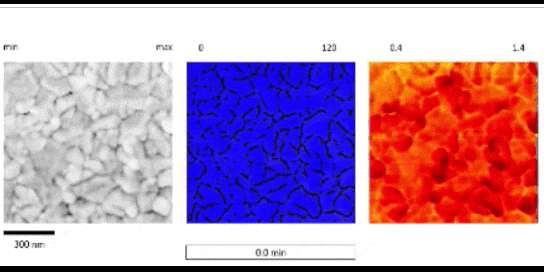
by J. Karst, F. Sterl, H. Linnenbank, T. Weiss, M. Hentschel and H. Giessen
Unlocking the nanoworld of plant cells by multimodal s-SNOM
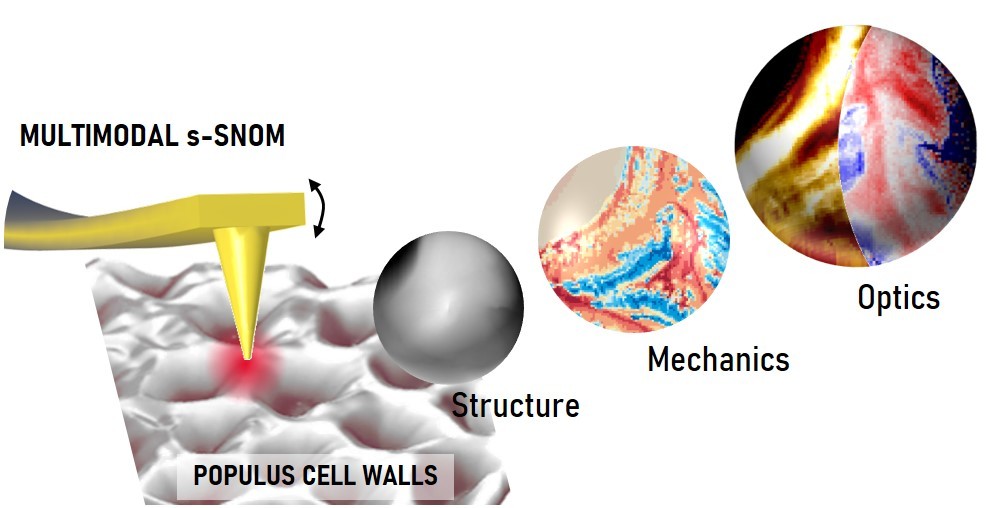
by A. M. Charrier, A. C. Normand, A. Passian, P. Schaefer and A. L. Lereu
A research consortium from Institut Fresnel, CINaM and ORNL, used multimodal s-SNOM to correlate mechanical properties, optical constants and chemical distribution of the wood cell wall in-situ. Using a combination of all these AFM modes the researchers followed a delignification process that enabled establishing factors preventing the complete removal of lignin, an important process for smart resource utilization in the wood industry.
sSNOM probes molecular orientation of organic semiconductors
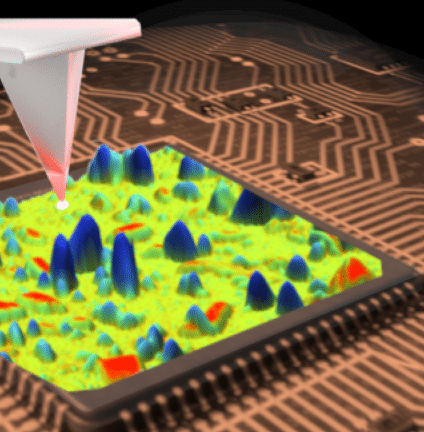
by N. Mrkyvkova, A. Cernescu, Z. Futera, A. Nebojsa, A. Dubroka, M. Sojkova, M. Hulman, E. Majkova, M. Jergel, P. Siffalovic and F. Schreiber
Researchers from the Center of Advanced Material Applications in Bratislava investigated the molecular orientation and mapped the heterogeneity of discreet molecular structures in semiconducting organic films using the light-induced anisotropic s-SNOM response of vibrational modes to reveal the defects in molecular orientation. They developed a method to measure molecular orientation using both amplitude and phase s-SMOM signal.
High-performance crystalline nanocellulose
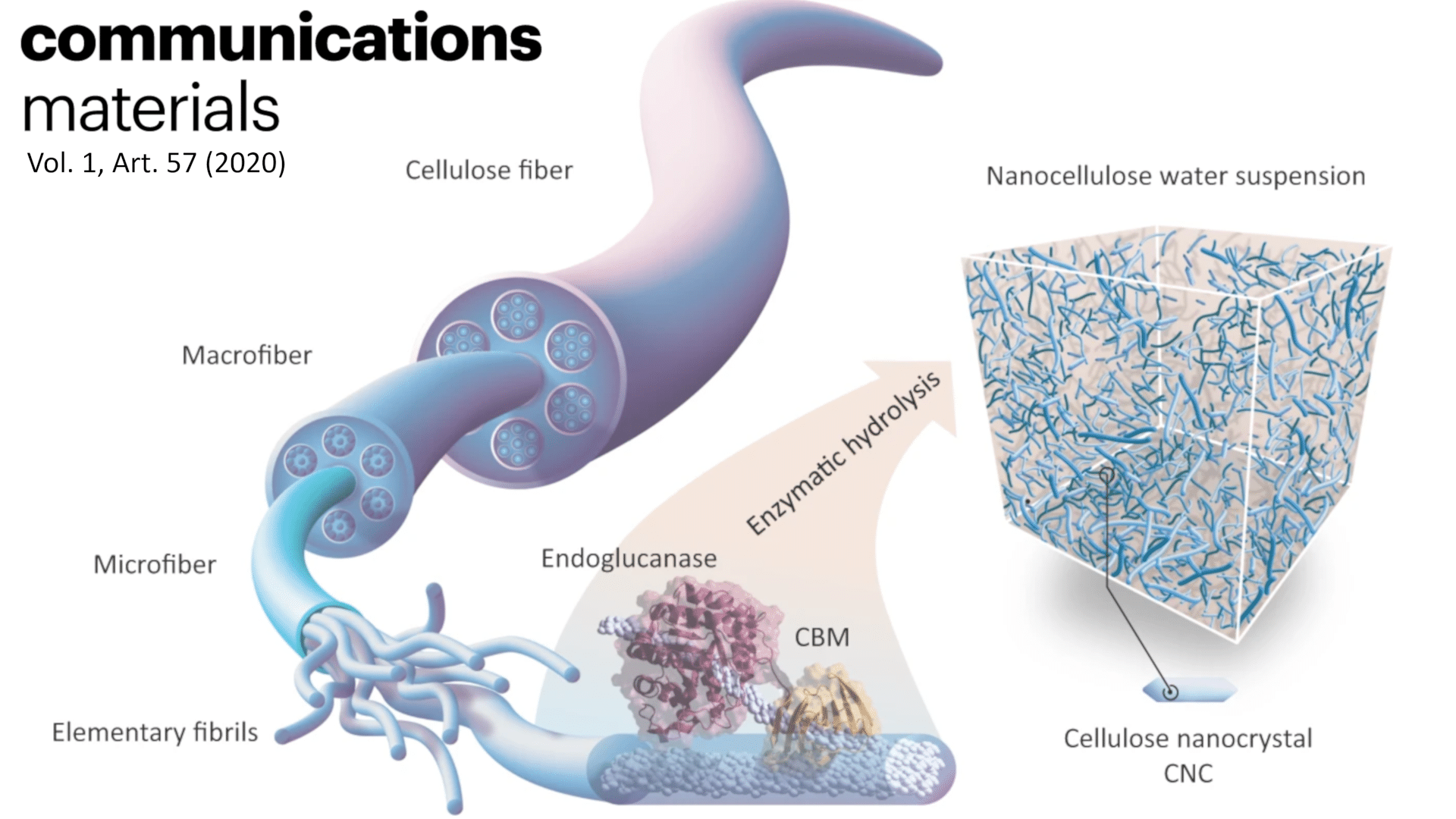
by B. Alonso-Lerma, L. Barandiaran, L. Ugarte, I. Larraza, A. Reifs, R. Olmos-Juste, N. Barruetabeña, I. Amenabar, R. Hillenbrand, A. Eceiza and R. Perez-Jimenez
Nanocellulose is the most abundant linear biopolymer on our planet. Structural analysis using AFM suggests their twisted structure, however, does not provide chemical identity.
Protein nanoribbons template enamel mineralization
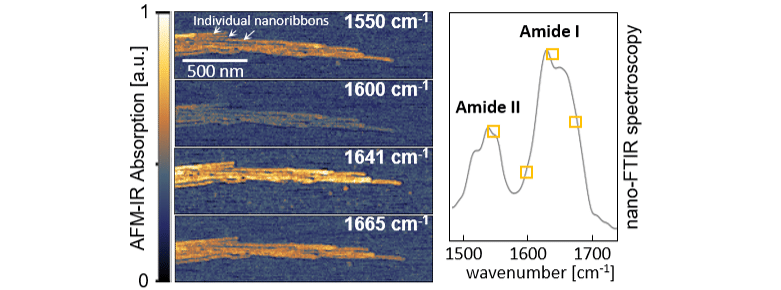
by Y. Bai, Z. Yu, L. Ackerman, Y. Zhang, J. Bonde, W. Li, Y. Cheng and S. Habelitz
Dental enamel is a true masterpiece of nature’s engineering. Structural analysis using AFM suggests their twisted structure, however, does not provide chemical identity.
Strong coupling between phonon polaritons & organic molecules
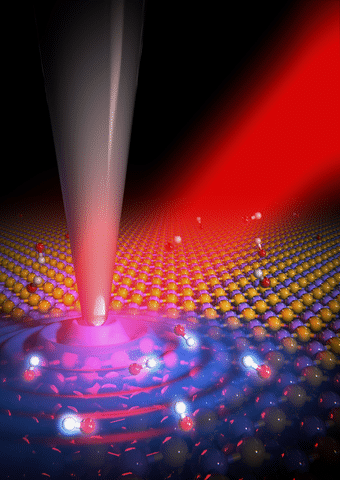
by Andrei Bylinkin, Martin Schnell, Marta Autore, Francesco Calavalle, Peining Li, Javier Taboada-Gutitierrez, Song Liu, James H. Edgar, Felix Casanova, Luis E. Hueso, Pablo Alonso-Gonzalez, Alexey Y. Nikitin and Rainer Hillenbrand
Light plays an essential role in modern science and technology, with applications ranging from fast optical communication to medical diagnosis and laser surgery.
Near-field encounter: nano-PL and nano-Raman meets s-SNOM
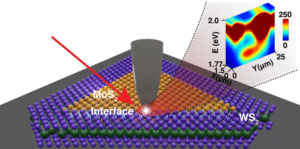
by Alireza Fali, Tianyi Zhang, Jason Patrick Terry, Ethan Kahn, Kazunori Fujisawa, Bernd Kabius, Sandhaya Koirala, Yassamin Ghafouri, Da Zhou, Wenshen Song, Li Yang, Mauricio Terrones, and Yohannes Abate
A study led by University of Georgia researchers announces the successful use of a new nanoimaging technique that will allow researchers to test and identify these materials in a comprehensive way at the nanoscale for the first time. Now, there’s a way to experiment with new materials for our big ideas at a really, really small scale.
nano-FTIR shine new light on making 2D polymers
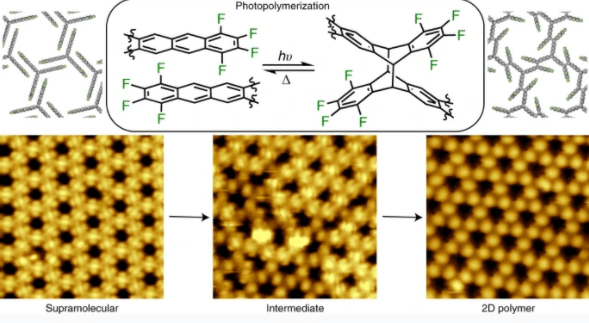
by L. Grossmann, B. T. King, S. Reichlmaier, N. Hartmann, J. Rosen, W. M. Heckl, J. Björk and M. Lackinger
An international research team with members from Linköping University, the Deutsches Museum and the Technical University of Munich, among others, has developed a method to manufacture two-dimensional polymers with the thickness of a single molecule. The polymers are formed on a surface by the action of light. The discovery paves the way to new ultrathin and functional materials and has been published in Nature Chemistry.
Correlative nano-imaging: KPFM complements s-SNOM
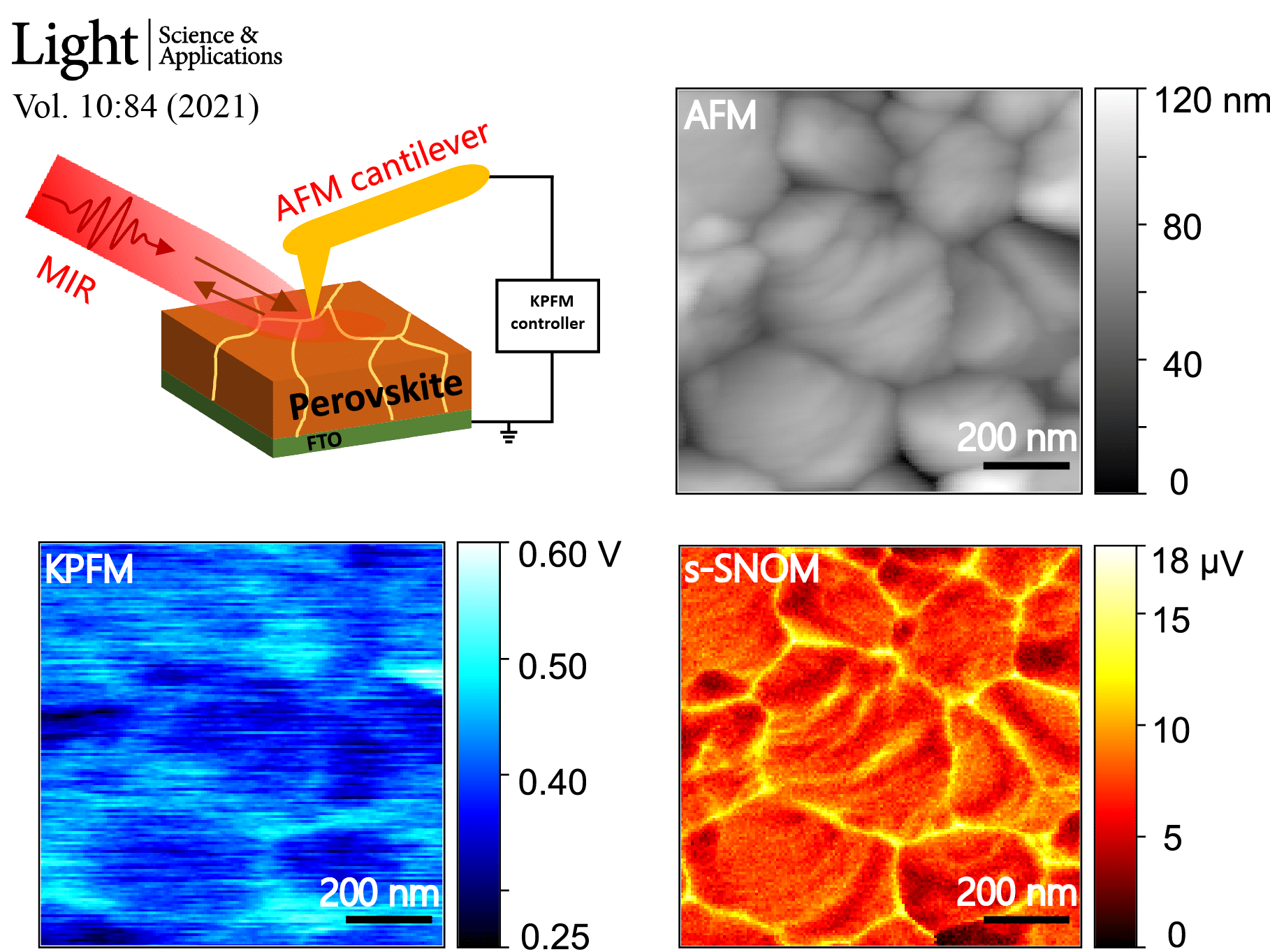
by Ting-Xiao Qin, En-Ming You, Mao-Xin Zhang, Peng Zheng, Xiao-Feng Huang, Song-Yuan Ding, Bing-Wei Mao and Zhong-Qun Tian
Perovskites become an emerging material for solar cells with rapidly boosted power conversion efficiency. The polycrystalline nature of perovskite active layers leads to the unavoidable existence of numerous nanometer-sized grain boundaries (GBs). Understanding the impact of GBs on solar cell performance is crucial for the design of perovskite active layer structures.


